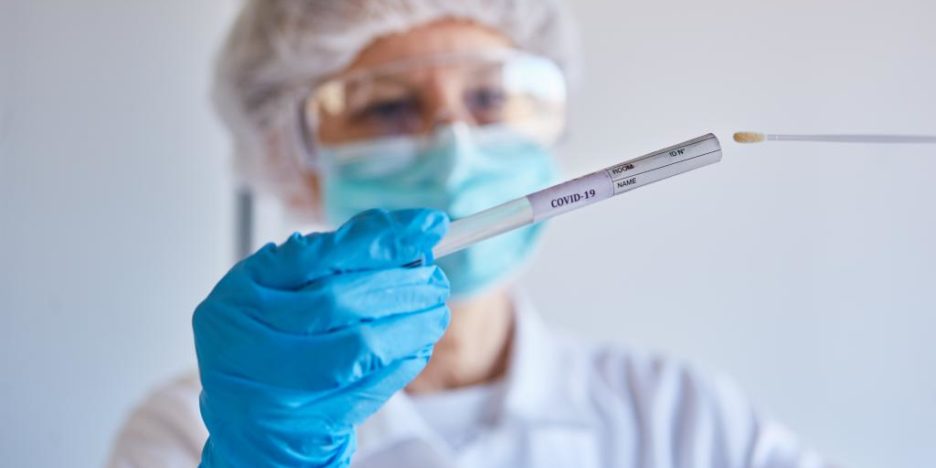BLOG
Understanding the Different
COVID-19 Tests

Do you know what a PCR test is?
What happens to those nasal swabs after they’re taken? And what does it mean to have antibodies? When you need to get tested for COVID-19, it’s important to understand the type and function of the test you’re receiving. Each test can tell you different things about your COVID-19 status, so having a clear picture of what they mean can help you decide what test or tests are right for you. In the following post, we’ll cover common questions about a variety of COVID-19 tests and describe how APG Labs is helping researchers and patients alike to fight this virus.
Diagnostic vs. Antibody Tests
If you’ve been tested for COVID-19 before, you might have had the inside of your nose swabbed or your blood drawn. Each of these techniques represents a different kind of COVID-19 test. Nasal swabs are a kind of diagnostic test, which will tell you if you currently have COVID-19. Diagnostic tests can detect the presence of COVID-19 before symptoms start manifesting. In the next section, we’ll go over the different kinds of diagnostic tests, and explain how they work to detect the presence of the virus.
The other class of test is an antibody test, also known as a serological test, which tests for the presence of antibodies associated with COVID-19 in your blood. These antibodies are a product of your body’s immune response to COVID-19. They may represent increased resistance or even immunity to the virus; however, antibody tests are not used to detect active infection. Additionally, not everyone who has COVID-19 ends up with antibodies, and not everyone who has had COVID-19 has displayed symptoms. For this reason, antibody tests can give you a clearer picture of your history with COVID-19, but should not be used to diagnose an active infection.
Types of Diagnostic Tests
Understanding NAAT and PCR tests
Within the class of diagnostic tests, there are several different types. For some diagnostic tests, technicians perform a nucleic acid amplification test (NAAT). NAATs are effective because of their ability to detect very small concentrations of a virus that other tests might miss. One such test, called an rt-PCR test, uses a nasal swab to detect the presence of COVID-19. This test can be performed by swabbing the back of the throat or the inside of the nose, either with a technician or with an at-home collection kit.
This rt-PCR test is a type of (polymerase chain reaction) PCR test, which creates copies of specific strands of DNA to detect even the smallest possible amounts of a given virus. The “rt” in rt-PCR stands for reverse transcriptase, which is used to make DNA copies of the RNA present in the COVID-19 virus to facilitate the remainder of the test.
Test Accuracy:
Differences between at-home and clinically administered tests
When you receive a COVID-19 test of any kind, whether it is performed in a hospital or at home, you will receive results appropriate to the type of test you received: a COVID diagnosis for diagnostic tests and an antibody assessment for antibody tests. Both diagnostic and antibody tests are close to 100% accurate, and an at-home diagnostic test is just as accurate as those performed by technicians at designated testing sites. Despite this, a false negative result is possible. This can happen if it is too early in infection to detect the virus or if there was a problem with your sample or the test itself. A false negative result should be considered if you have had recent exposure to the virus along with symptoms consistent with COVID-19, especially if diagnostic tests for other respiratory illnesses are negative.
The Right Test for You:
Being faced with whether you have or had COVID-19 can be stressful for you and those around you. By understanding the types of tests and your options, hopefully, you alleviate some of that stress and make the right choice for you.
